Kristina Bush is a rising senior at Mount Holyoke College. She majors in medieval studies and minors in public history, museums, archives, and digital humanities. Kristina is currently working at the American Antiquarian Society as a summer page in readers’ services. Being an avid book-lover and history nerd, Kristina has greatly enjoyed her time at AAS.
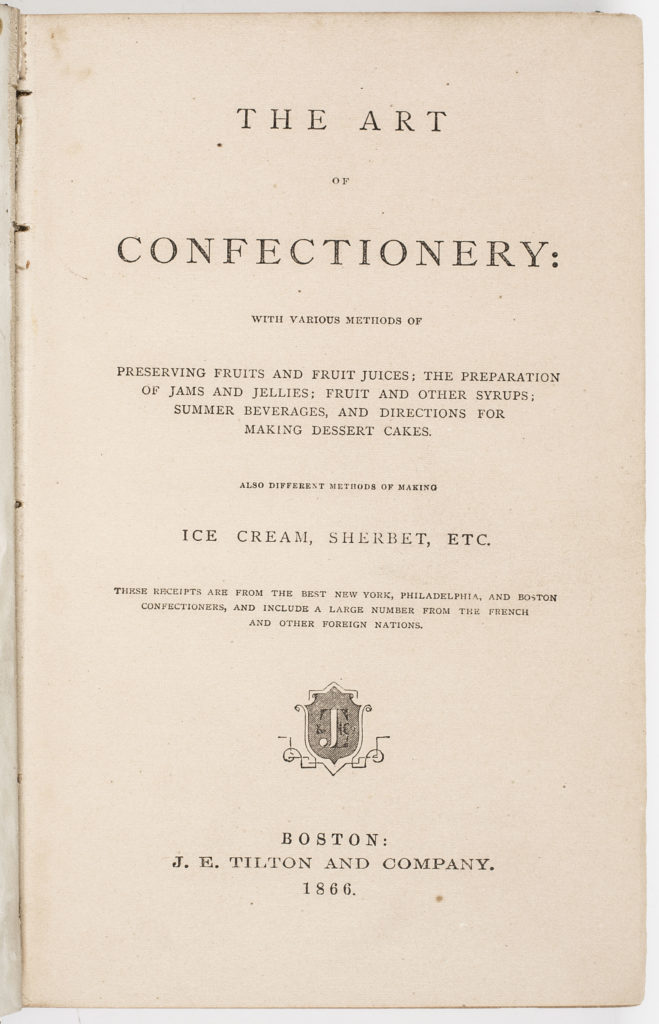 One of the most surprising and exciting things I discovered in the stacks of the American Antiquarian Society was the cookbook collection. As someone who loves to bake, I was immediately interested in spending more time with this collection. Also inspired by former assistant manuscript curator Tracey Kry’s blog posts, I decided to test out a recipe. From the 1866 cookbook The Art of Confectionery, I selected a recipe for cupcakes.
One of the most surprising and exciting things I discovered in the stacks of the American Antiquarian Society was the cookbook collection. As someone who loves to bake, I was immediately interested in spending more time with this collection. Also inspired by former assistant manuscript curator Tracey Kry’s blog posts, I decided to test out a recipe. From the 1866 cookbook The Art of Confectionery, I selected a recipe for cupcakes.
The ingredients themselves did not seem too different from those in modern day recipes: flour, sugar, eggs, baking soda (which was called cake soda), and even sour cream, which I have used before in coffee cake. The two ingredients that most reflected the differences between the nineteenth-century pantry and that of a modern kitchen were rosewater and brandy. I believe that these two ingredients perform the function of vanilla in most modern recipes by flavoring the batter. My biggest challenge in making the recipe was finding rosewater, which turned out to be rather difficult to obtain. I could not find it in my local supermarket, and so I replaced it with orange blossom tea, as suggested in a trusty Google search.
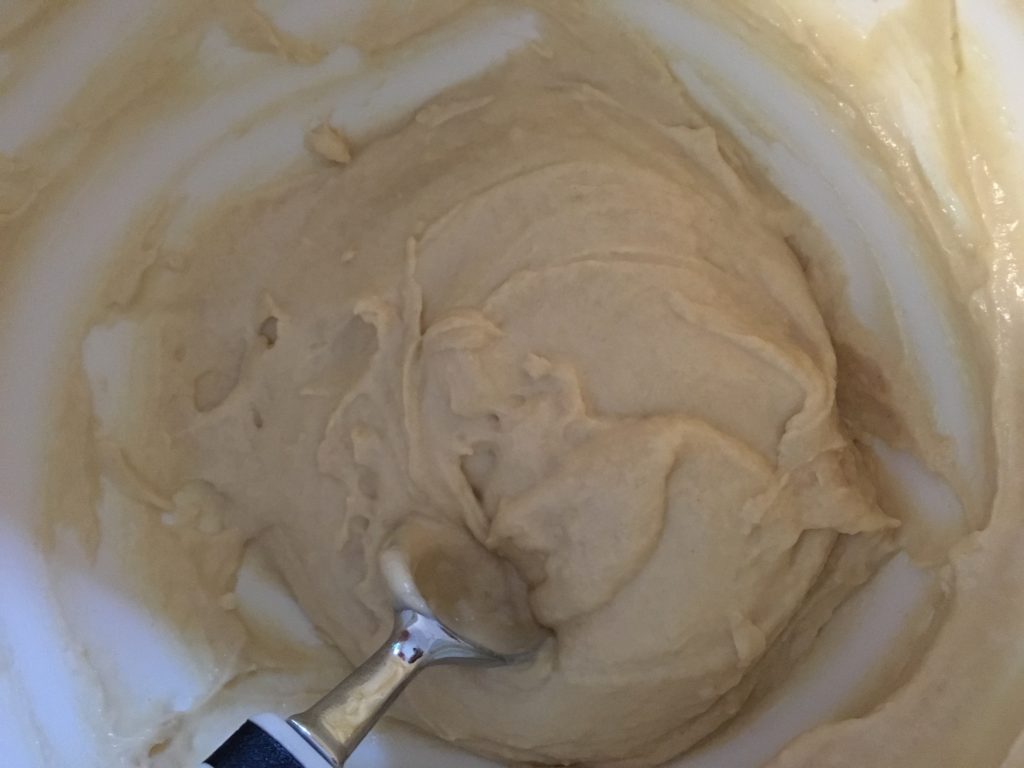 When it came to baking the cake, I was pleased to find the recipe I chose had specific measurements for all the dry ingredients. Some of the other recipes I came across in my research didn’t have measurements at all or used outdated measurements such as drams. First, I combined the softened butter with sugar using my hands. Then I added flour cup by cup, stirring with a wooden spoon. I didn’t use an electric mixer in the hopes of retaining historical accuracy. When the mix began to stick or looked too dry, I alternated adding brandy or the cooled orange blossom tea. Channeling Rachael Ray, I eyeballed the measurements of the liquids as the quantities were not listed in the recipe. I ended up using almost an entire 1.7 oz bottle of brandy and about half a cup of tea. Stirring the recipe ended up being quite a workout! I was glad that paging folio volumes at AAS this summer has been building up my arm strength. After adding the sour cream and baking soda dissolved in whole milk (the modern equivalent of sweet milk), the batter came together quite thick, similar to what one would expect of a muffin batter.
When it came to baking the cake, I was pleased to find the recipe I chose had specific measurements for all the dry ingredients. Some of the other recipes I came across in my research didn’t have measurements at all or used outdated measurements such as drams. First, I combined the softened butter with sugar using my hands. Then I added flour cup by cup, stirring with a wooden spoon. I didn’t use an electric mixer in the hopes of retaining historical accuracy. When the mix began to stick or looked too dry, I alternated adding brandy or the cooled orange blossom tea. Channeling Rachael Ray, I eyeballed the measurements of the liquids as the quantities were not listed in the recipe. I ended up using almost an entire 1.7 oz bottle of brandy and about half a cup of tea. Stirring the recipe ended up being quite a workout! I was glad that paging folio volumes at AAS this summer has been building up my arm strength. After adding the sour cream and baking soda dissolved in whole milk (the modern equivalent of sweet milk), the batter came together quite thick, similar to what one would expect of a muffin batter.
The next question was of baking temperature and time. I figured that it would be best to go with the traditional 350 degrees Fahrenheit and I set the timer for twenty minutes. Of course in 1866 an oven would have looked quite different and a new one at the time would have used coal as a heat source. This would allow for the cupcakes to bake at a constant sustained temperature, meaning that the conditions of my modern oven were not too dissimilar from those of the 1866 baker’s.
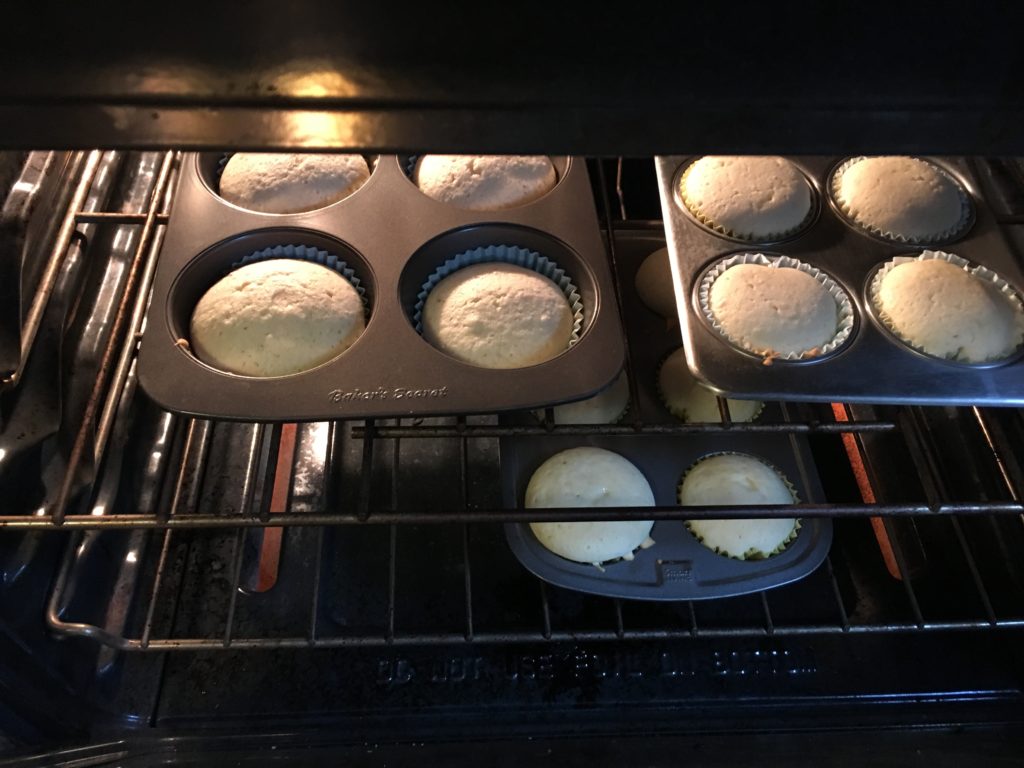 The cupcakes took between twenty-five and thirty minutes to cook and turned out a bit paler in color than expected. Despite the disappointing lack of a golden top, they tasted great! The brandy and tea flavor really came through. The texture was closer to that of a muffin than a cupcake; it was dense, fluffy, and moist. I didn’t even think they needed frosting—and I’m an avid frosting lover! (I was initially disturbed by the lack of a frosting recipe to accompany the cupcake recipe.)
The cupcakes took between twenty-five and thirty minutes to cook and turned out a bit paler in color than expected. Despite the disappointing lack of a golden top, they tasted great! The brandy and tea flavor really came through. The texture was closer to that of a muffin than a cupcake; it was dense, fluffy, and moist. I didn’t even think they needed frosting—and I’m an avid frosting lover! (I was initially disturbed by the lack of a frosting recipe to accompany the cupcake recipe.)
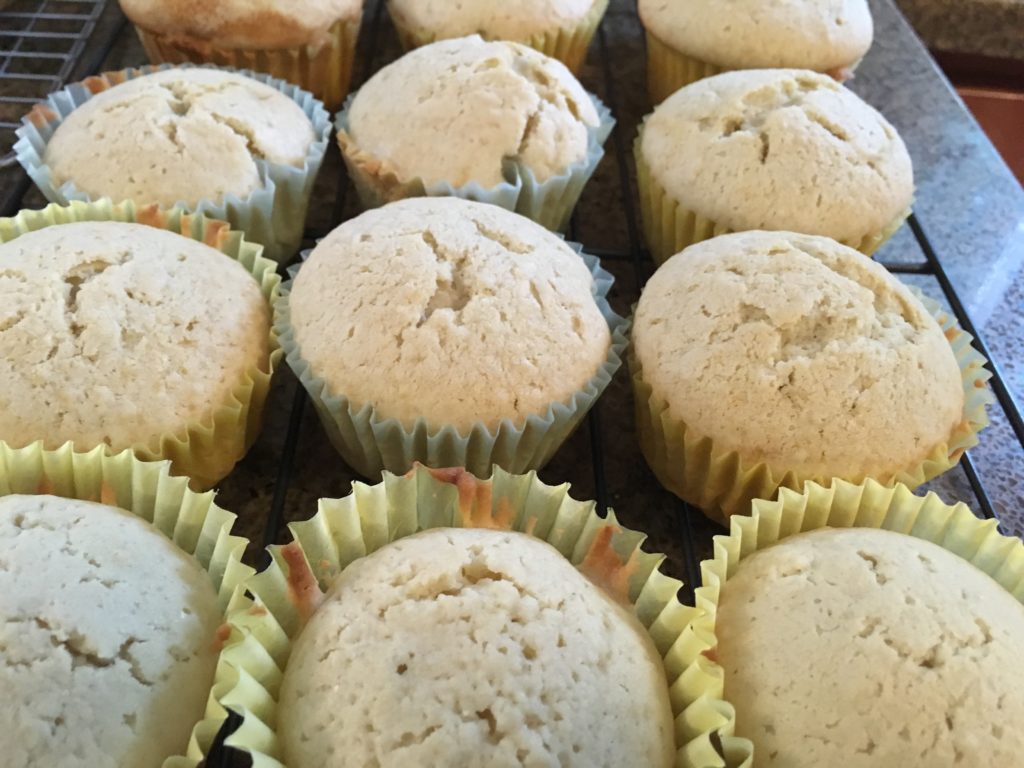 I found that other recipes often suggested pairing cakes with jam, marmalade, or a light glaze. In favor of historical accuracy (and eating lots of cupcakes) I decided to try all the options. First, I tested a bit of the cupcake with blueberry jam, which I thought overwhelmed the delicate flavor of the cupcake. The marmalade paired better with the cupcake due to the orange flavor already present. My favorite topping was a simple lemon glaze I prepared with confectioners’ sugar, lemon rind, lemon juice, and milk. The citrus flavors complemented each other but the lemon did not overwhelm the flavor of the cupcake. All in all I would call this a success story!
I found that other recipes often suggested pairing cakes with jam, marmalade, or a light glaze. In favor of historical accuracy (and eating lots of cupcakes) I decided to try all the options. First, I tested a bit of the cupcake with blueberry jam, which I thought overwhelmed the delicate flavor of the cupcake. The marmalade paired better with the cupcake due to the orange flavor already present. My favorite topping was a simple lemon glaze I prepared with confectioners’ sugar, lemon rind, lemon juice, and milk. The citrus flavors complemented each other but the lemon did not overwhelm the flavor of the cupcake. All in all I would call this a success story!
I have so enjoyed the opportunity to be surrounded by history on a daily basis. Working at the American Antiquarian Society has been a dream come true for me. Besides spending most of my time in the stacks, which I can now successfully navigate (an accomplishment in itself!), I 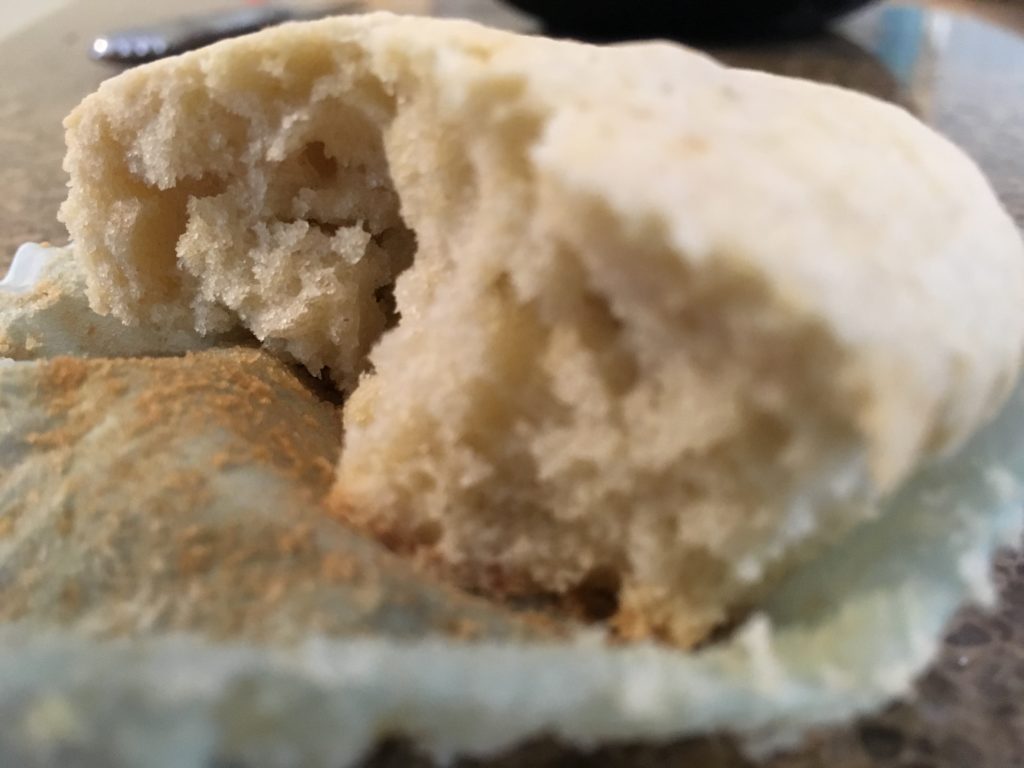 have also been able to work on a transcription project, find “lost” books, cover books in mylar, and meet amazing people. Working here has been inspirational on many levels. I am inspired to continue pursuing a library degree as I now know that I would like to work at an institution like AAS. I love being able to interact with researchers and historic material, and do something different every day. As a student, watching the AAS fellows conduct their research has inspired me to aim for their level of passion and focus in my own studies. The skills I have learned here will also translate to my academic interests at Mount Holyoke College. For example, working with the catalog and hearing about AAS’s outreach programs will inform my minor in public history and archives. I am looking forward to returning to school for my senior year and applying the knowledge and drive I have acquired this summer to my course work. I leave AAS feeling affirmed in my future and grateful for the opportunity I have been given.
have also been able to work on a transcription project, find “lost” books, cover books in mylar, and meet amazing people. Working here has been inspirational on many levels. I am inspired to continue pursuing a library degree as I now know that I would like to work at an institution like AAS. I love being able to interact with researchers and historic material, and do something different every day. As a student, watching the AAS fellows conduct their research has inspired me to aim for their level of passion and focus in my own studies. The skills I have learned here will also translate to my academic interests at Mount Holyoke College. For example, working with the catalog and hearing about AAS’s outreach programs will inform my minor in public history and archives. I am looking forward to returning to school for my senior year and applying the knowledge and drive I have acquired this summer to my course work. I leave AAS feeling affirmed in my future and grateful for the opportunity I have been given.

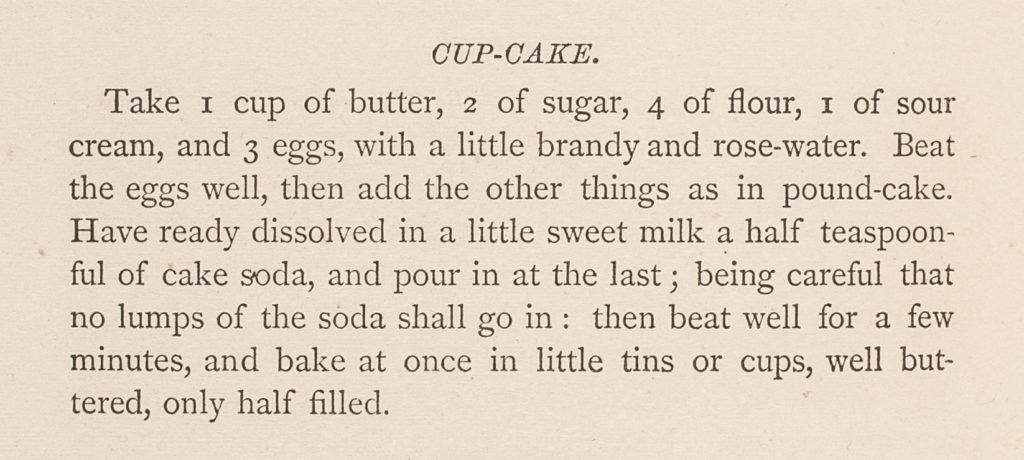
rosewater can be found in Indian/Pakistani grocers